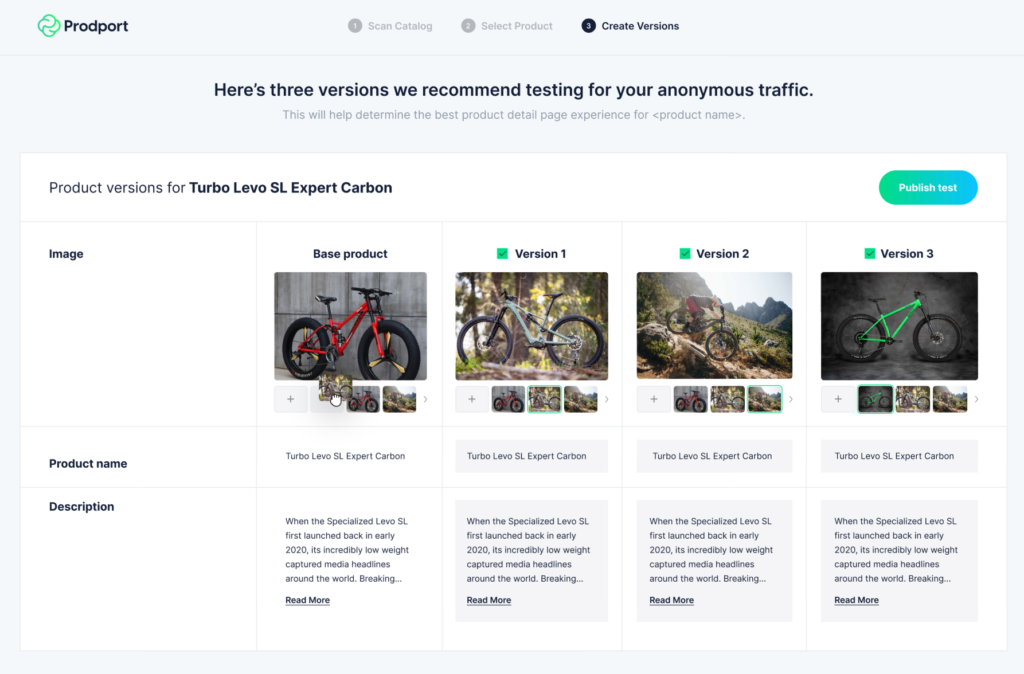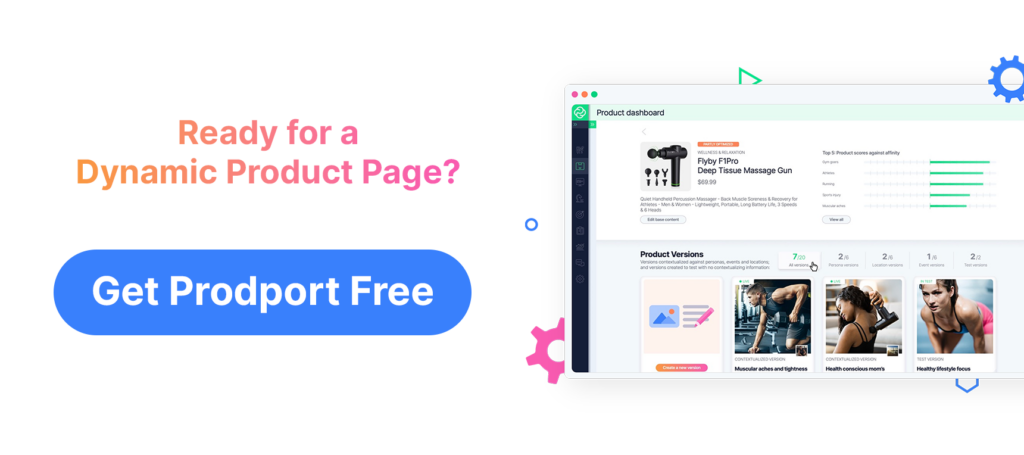With many companies offering similar products, the challenge lies in distinguishing your business in a crowded marketplace.
So, how do you get your brand to be the one that stands out?
We’re exploring that today.
Let’s focus on how to smartly categorize everything from those unique, specialty items to your everyday shopping goods. We have real-life examples and some neat tricks to help you connect with your shoppers.
Key takeaways
- Understand target audience preferences and buying behavior for effective product category marketing.
- Use meaningful categorization and optimize product descriptions/attributes to improve customer experience.
- Implement engaging marketing strategies, analyze feedback & iterate accordingly to maximize ecommerce success.
1. Understand your target audience

Picture this – you walk into a store looking for toothpaste, but instead of finding it in the familiar “bathroom essentials” section, you find it between electronics. Confusing, right?
This is exactly how your users would feel if your product categories were not tailored to their expectations and needs.
The key to avoiding such a mishap lies in understanding your target audience and their preferences, needs, and buying behavior.
How to understand your target audience better?
- Chat with your consumers – Seriously, nothing beats asking directly. Whip up quick customer surveys or, even better, have real conversations through interviews or social media. You’ll be amazed at what you learn just by asking, “Hey, what do you think about our products?”
- Social media investigations – It’s like being a detective but online. Check out social media and see what your audience is buzzing about. Follow their hashtags, join their groups, and pay attention to their posts.
- Keep an eye on the competition and do market research – Sometimes, your competitors can teach you something. Check out what they’re doing and how their customers discover the right product category. It’s not about copying them but learning from their hits and misses.
- Use brand monitoring tools – Tools like Brand24 are invaluable to your product category marketing. They help you navigate towards customer satisfaction and brand recognition, ultimately attracting more customers.
However, in e-commerce, multiple brands can fight for attention within the same product category.
Here’s the real challenge: making your brand pop and sparkle in this crowd.
You need a killer marketing strategy that makes your brand stand out among other brands, not just another face in the crowd.
Organizing your product categories effectively not only helps you organize products with ease but also contributes to a positive shopping experience. Imagine this organization as a helpful storekeeper who leads you directly to the item you need. This positive experience can create a ripple effect – strengthen your brand recognition across multiple categories.
2. Categorize products effectively
Just as a librarian categorizes books based on their genre and author, you must organize your products logically and intuitively.
With this product category taxonomy, your clients can find what they’re looking for easily.
Creating meaningful and relevant category names can be as significant as naming a newborn. It should resonate with your target audience and reflect what lies within.
For example, a clothing brand usually categorizes its products into men, women, and children and then further into tops, bottoms, accessories, etc. Same as Zara does.

Source: Zara
These top-level categories and subcategories not only make it easier for visitors to find products that meet their specific requirements but also underscore your commitment to addressing clients’ needs.
However, the task of allocating categories to products can be quite daunting, especially when you have a wide range of products. However, you need not fear, as technology can be a great ally in this task.
How to categorize your product base more effectively?
- Automated assignments – Use automated tools to categorize products based on their titles, descriptions, and other specifics. It’s a time-saver and ensures accuracy.
- Manual category assignment – Alternatively, you can manually input category names or ID numbers for each product. Use established taxonomies like those from Google or Facebook for consistency.
Organizing connected products in a logical manner makes it easier for consumers to navigate and find product fits.
3. Optimize product descriptions and attributes
Once your products are well-organized on your website, the next step is to make them stand out.
And what better way to do this than through compelling product descriptions?
Product descriptions can be viewed as your sales pitch. They highlight the unique selling points and benefits of your products and convince your prospects to hit that “Add to Cart” button.
Descriptive product attributes like size, color, and specifications can guide your consumers to their desired product, much like breadcrumbs on a path.
Take a beauty brand offering a range of foundations for different skin tones or a pet brand with dog beds for all sizes, ages, and health needs. It’s crucial to nail the details in your product attributes to meet the diverse needs of your customers within their product lines.

Source: rhode
Now, more about product descriptions.
Descriptions should do more than just list features. They need to grab the customer’s attention. Tell a story that pulls the reader in and makes them want to buy.
- Highlight key features – Emphasize the unique aspects of each product that make it stand out in its category.
- Be specific and detailed – Provide detailed information about the product, including size, material, functionality, and any other relevant specifics.
- Focus on benefits – Explain how the product can solve problems or enhance the customer’s life, not just its features.
- Use engaging language – Write in a way that captures interest and imagination, making the product more appealing.
- Tailor to the target audience – Use language and details that resonate with the specific audience you’re targeting within the category. For example, Prodport can help you create personalized product pages with content tailored to the users based on their preferences and behavior.

4. Implement effective marketing strategies
With your products well-organized and compellingly described, the next step is to make them visible to your target customers.
Effective marketing strategies become essential at this point. Like a town crier, they spread the word about your product categories across multiple channels.
Social media, email marketing, and content marketing form the triad of digital marketing, each with a unique role:
- Social media helps maintain brand visibility and engages new customers
- Email marketing nurtures and retains existing customers
- Content marketing educates and engages your audience
Producing engaging and visually appealing content to feature your product categories can be compared to arranging an attractive window display. It catches the eye and draws customers in.
For example, a pet brand could use delightful dog-related content on its social feeds, while an eco-conscious brand could use compelling imagery to highlight pressing environmental issues.
Integrating a brand’s core values into marketing efforts can spice up the brand’s appeal, much like seasoning in a dish. It adds flavor and makes it more appealing. And make a significant impact on the overall perception of the brand.
5. Analyze and iterate
As a pilot doesn’t fly a plane without instruments, you should not run your marketing campaigns without data and metrics.
Metrics and data help you gauge the success of your marketing campaigns. They reveal customer behavior and sales trends, which can be used to refine your strategies and identify areas for improvement.
Customer feedback and reviews can:
- Be compared to a weather forecast which alerts you to potential issues and guides your strategy
- Help you identify areas for improvement
- Refine your strategies based on customer insights and market trends
Just as a compass isn’t used to measure temperature, the right tools are necessary to analyze your ecommerce data and metrics. Some tools that can help you understand customer preferences and optimize your product offerings are free. For example, Google Analytics can give you valuable insight into what’s working and what needs improvement.
It’s a wrap-up
Getting your product types sorted is a mix of good planning and really getting what your customers want. It’s all about the combination of what you do with what your customers want, whether it’s one-of-a-kind specialty goods or a variety of shopping goods.
Don’t forget about your product pages – they’re your digital storefront. Want to make them really shine? Check out Prodport. Personalize your product pages to match your unique style and meet your customers’ needs.
Frequently Asked Questions (FAQs)
Here is the list of the most frequently asked questions related to the product categories topic.
What are the 4 major categories of products?
The four major categories of products are convenience, shopping, specialty, and unsought goods, based on consumer habits, price, and product characteristics.
What is an example of a product category?
Product categories are groupings of products with similar characteristics, such as toothpaste, winter boots, or dishwashing liquid. An example of a product category could be party outfits, hunting gear, or makeup tools.
What are product categories in retail?
Product categories in retail allow businesses to easily organize and group their products and services, making it easy for customers to find what they’re looking for and employees to quickly reference a product.
What is the significance of understanding the target audience for product category organization and marketing?
Understanding the target audience allows a company to tailor an approach to customers’ needs and buying behavior. It ensures that products are more accessible, facilitates brand trust, and allows products to be organized around what the target audience wants.
